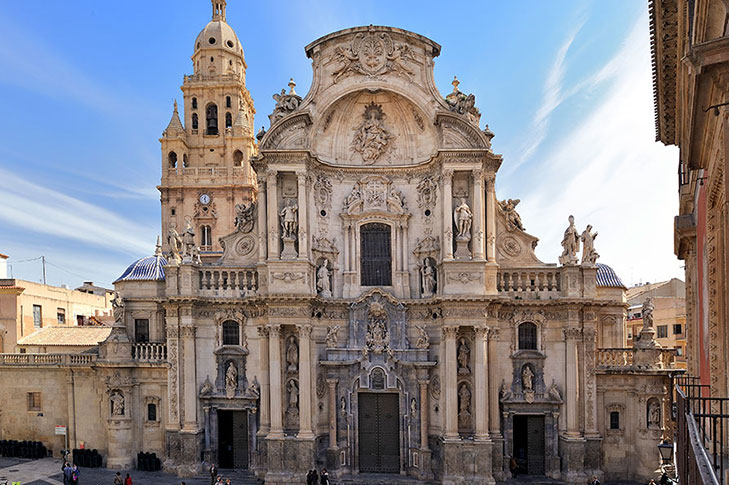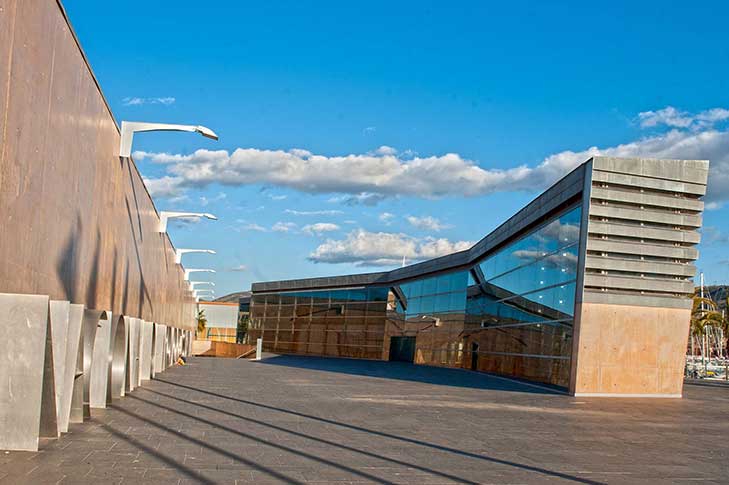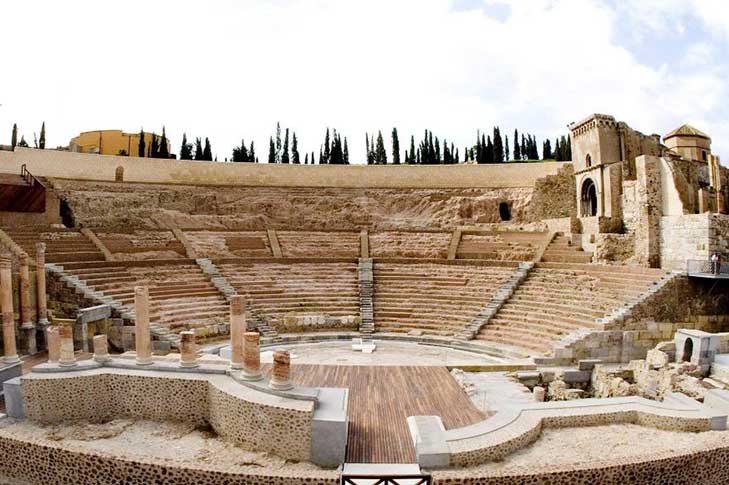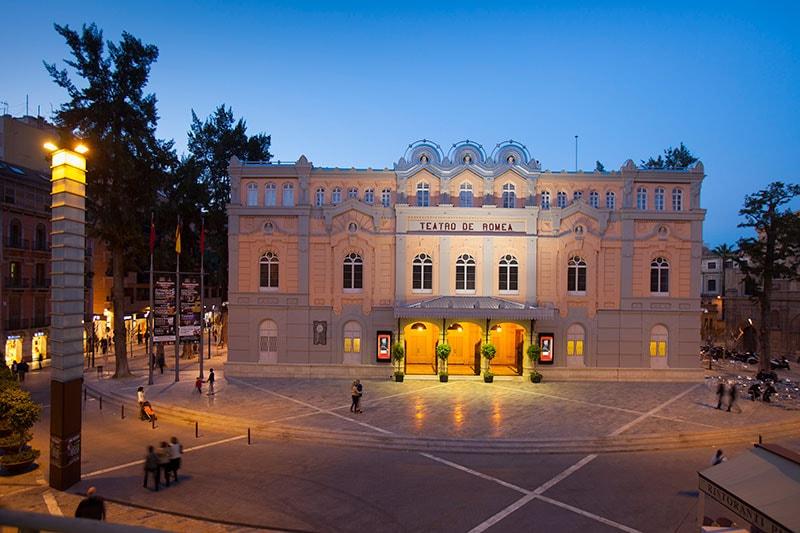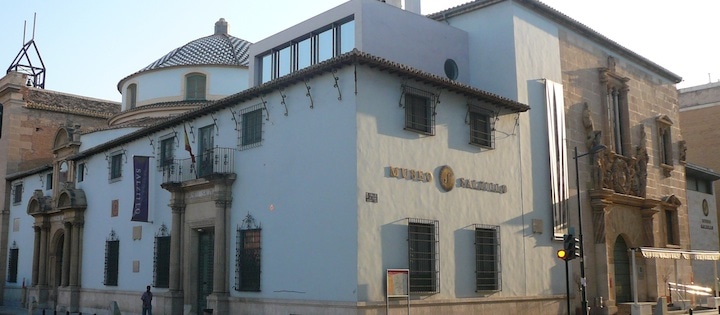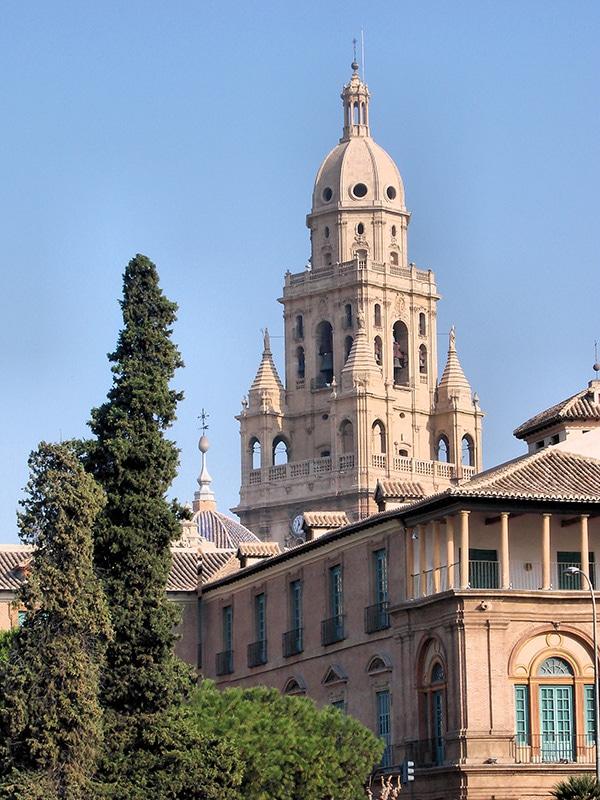Museums, Theaters, Architecture, Murcia
Removed from Unnamed collection
Museum of the Cathedral of Murcia
The most important temple in the Region is a magnificent merge of styles, a catalogue of stone which summarizes more than six centuries of art and history.
Its construction began in 1394 over the remains of an old Arabic mosque and in 1462 its vaults were finished. The oldest entrance is La Puerta de Los Apóstoles (the door of the Apostles). Its only storefront is flanked by pointed archivolts with statues of the apostles on it. La Puerta de las Cadenas( the door of the Chains) dates from 1513 and has original pilasters and archivolts.
From the 15th century dates the Capilla de Los Vélez covered by a ten-pointed star vault and profusely decorated. Another famous chapel is that of Junterón, whose oval ground plan is covered by an extremely original vault.
Its baroque main façade (Imafronte), Jaime Bort¿s work, is an exaltation of Levantine art (the 18th century eastern Spain art). It is divided as an altarpiece into two parts and three vertical sections. The tower, divided into five parts, is 92 meters high. Its construction started in 1511 and the fifth body hosts twenty-five church bells https://www.murciaturistica.es/en/monument/catedral-de-murcia-327/
Map
Removed from Unnamed collection
National Museum of Underwater Archaeology
ARQUA Museo Nacional de Arqueología Subacuática is the institution in charge of studying, valuing, investigating, preserving, disseminating and protecting the Spanish underwater cultural heritage. It is also home to the Permanent Observatory for the National Plan for the Protection of Underwater Cultural Heritage.
These tasks are carried out in collaboration with the different regional governments and its research centres and in cooperation with the States who partner with the UNESCO Convention.
Furthermore, the ARQUA has recently taken charge of the Odyssey’s treasure. The Nuestra Señora de las Mercedes frigate collection, which consists of more than 570,000 gold and silver coins from the late 18th century and the beginning of the 19th century. https://www.murciaturistica.es/en/museum/arqua-museo-nacional-de-arqueologia-subacuatica-132/
Map
Removed from Unnamed collection
Roman Theatre
In 1990 the first remains of what would be one of the most interesting monuments of the city of Cartagena were discovered accidentally. It is one of the largest and most comprehensive theatres throughout Spain.
It was built in 44 BC when Octavian Augustus was emperor and Cartagena was a Roman colony (Colonia Urbs Nova Carthago) going through a period of high population and economic development; at that time it was called Carthago Nova. From its location, the theatre has witnessed different periods of the history of Cartagena, since the Roman Empire, up to the present, overlapping constructions of each of the historical periods. The Roman Theatre faithfully followed the theatre model proposed by Vitruvius. It was built almost entirely in the rock on a hill. https://www.murciaturistica.es/en/monument/teatro-romano-349/
Map
Removed from Unnamed collection
Museum of Santa Clara
On the Islamic-Mudejar palace of the Emir of Murcia, Ibn Hud, the monastery of Santa Clara was founded, which since 1365 houses the Clarisas nuns. In this building come several centuries of history and different cultures such as Islamic, Gothic and Baroque. The museum space and the nuns coexist in total harmony.
It conserves one of the oldest Arabic pools in Spain. https://www.murciaturistica.es/en/museum/museo-de-santa-clara-102/
Map
Removed from Unnamed collection
Romea Theater
With more than 150 years of history, the eclectic building of the Romea Theater is one of the most important cultural references of the city. Built after an earlier one that suffered two fires, the current theater was inaugurated in 1900 thanks to the architect Justo Millán. https://www.murciaturistica.es/en/monument/teatro-romea-955/
Map
Removed from Unnamed collection
Salzillo Musuem
The origin of this museum dates back to the 19th century. At that time, the life and work of Francisco Salzillo were soon enveloped by popular legends of romantic taste. https://www.murciaturistica.es/en/museum?ficha=45
Map
Removed from Unnamed collection
The Episcopal Palace
This one was demolished to give a much cleaner view to the facade of the Cathedral. Currently the Episcopal Palace occupies a place close to what used to be the Palacio del Alcázar. https://www.murciaturistica.es/en/monument?ficha=329
Map


